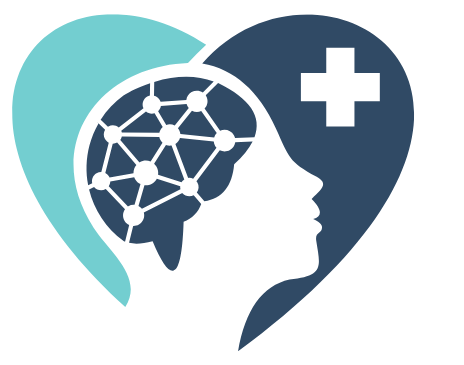Humans have developed many different theories about dreams. Today, leading theories in neuroscience argue that dreams are the brain’s way of inventing new experiences during REM sleep to prepare for eventualities in waking life, so that we might be more likely to survive challenges after having imagined them while asleep (in case you ever find yourself without clothes running up an elevator to escape a lion chasing after you).
In Psychology, dreams are also the brain’s way of releasing repressed emotions from our subconscious through symbols. Luckily, we don’t need hours of psychoanalysis or sleep studies to decipher what the subconscious might be telling us through our dreams. In fact, there are only 4 basic steps to interpret your dreams using skills from psychoanalysis, and I will explain them briefly in this post using one of my past dreams as an example.
Step 1: Record your dream as soon as you wake up
After waking from my dream, I grabbed my journal to record my dream as soon as I woke up, so that I would not forget any details. It’s very helpful to keep a dream journal on your side table next to your bed so that you can grab it quickly after waking from a dream. Following is what I could remember from my dream:
I was riding in a broke-down car with a few people, whom I did not trust. The other people in the car were on a drug run. I was riding in the back of the car, and couldn’t get out. Finally, the driver stopped at a pawn shop and we entered the building. I felt like I knew this place. I knew that the shop owner was the only guy in town who was trustworthy. The other people were asking him about some kind of drug. He brushed them off and told them to go elsewhere. I could only see some details of the shop, it was dark and dingy, and dirty. The shop owner stood behind a counter with a cash register. He bent down behind the counter to retrieve a letter in an envelope. The letter was addressed to me. I could clearly see that the return address was written in my deceased father’s handwriting. I could recognize his handwriting anywhere. Neatly written in sharp stokes and all capital letters was the word “WRITING.” Then I woke up.
Step 2: Write down the emotions you felt during your dream
After recording the details of your dream, the next step is to write down the emotions you felt during your dream. It might help to look over a list of emotions, such as Plutchik’s Wheel of Emotions. The emotions that I felt during my dream included: anger, frustration, fear and anxiety, relief, connection, surprise, sadness, and hope.
Step 3: Circle the words in the story that are meaningful to you. Even small details can have meaning.
The next step involves going through the details of your dream, which you wrote down, and circling the words that pop out at you, or that feel meaningful to you. Even details that seem minor can have significant meaning. You can then re-write the circled words as a list and explain why the word or phrase is meaningful to you. This step is very important, because you might be tempted to write down general meanings of symbols from a dream book, but this is not helpful. What matters are the personal associations that you have for the words and symbols, because they will reveal more significant meanings that generic interpretations. Following are the words that stood out from my dream, along with their personal meaning to me:
Riding – Going somewhere beyond my control (versus driving and being in control).
Broke-down car – Poverty.
Lack of trust – Being used.
Drug run – Criminal activity. Danger.
Back of the car – Trapped.
Pawn shop – A place that can help people.
Trustworthy owner – Someone who cares about others and can manage a business.
Drugs – The opposite of health (one of my core values).
Dark – Can’t seek or understand what’s going on around me.
Behind the counter – Barrier between me and the helpful person.
Letter – an important message.
Step 4: Consider the emotions and associations that you wrote down to see if they relate to your life.
The final step for interpreting your dream involves looking for connections between the emotions of your dream and the associations that you discovered from key words, symbols, and phrases. After reading over my lists, I started realizing connections between the emotions of fear and anxiety with the associations of being out of control, being on a journey with people who have mental illness, and feeling trapped by economic circumstances. I also noticed connections between the emotions of relief and hope with the associations of guidance from a male who is responsible, who can manage his own business, and who can manage finances. I then realized how these connections related to my life.
Around the time I had this dream, I was feeling anxiety and fear about my private practice and trying to balance therapeutic work with clients who are struggling with mental illness, along with the administrative and financial aspects of managing my own business. I had been suppressing a lot of my fear and anxiety by purposely affirming my confidence in myself, and trying to will myself into feeling optimistic. Subconsciously, my psyche had been working behind the scenes to soothe these repressed fears by imagining a character much like my father was, a responsible business owner who could serve clients and manage his finances, and by imagining an encouraging message from my father to focus on my “WRITING.”
Takeaways from the process of dream analysis
It brought such relief interpreting this dream. After my father passed away, I’ve discovered that I don’t dream about him often, but when I do I treasure those drams and hope to find meaning in them. Sometimes, I can’t find significance in the symbols or details, or I can’t remember strong emotions from the dreams. Not every dream reveals repressed information from our subconscious, but if you have any recurring dreams that leave you puzzled and wondering what your psyche is trying to tell you, I hope this process for interpreting dreams will be helpful to you. Of course, this self-help strategy could not replace the insight of a trained psychoanalyst. To connect with a therapist who can help you analyze your dreams, you can visit the American Psychoanalytic Association.

